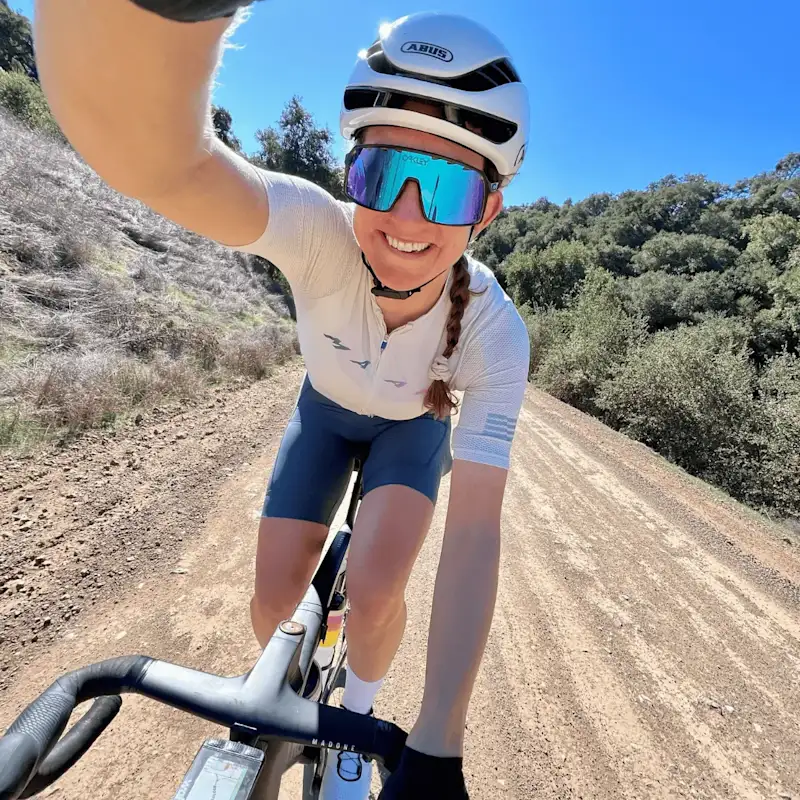
Paige Onweller
Dirty South Roubaix
Paige's headline numbers
Paige's strategy
Fueling
Carbohydrate is the main fuel you burn when racing. Failing to fuel properly is a leading cause of underperformance in longer races.
Paige’s first race of the season - which she called a ‘rust buster’ - was a great opportunity to practice her fuel and hydration strategy, including the timing and types of fuel she’ll use throughout the season. She executed her pre-planned strategy well, consuming close to 100g of carbs per hour without stomach discomfort. Her intake included two carb-rich bottles of Carb & Electrolyte Drink Mix and Carb Only Drink Mix, one flask of PF 300 Flow Gel and a couple of PF 30 Caffeine Gels. Years of gut training, combined with the high race power she’s pushing (therefore demanding a greater availability of carbohydrates), allows Paige to tolerate higher than standard carbohydrate intake recommendations. This race was a successful early-season test of that capability under real race conditions, with the added stress and intensity of competing.
Hydration
Taking on board an appropriate amount of fluid and sodium is essential to maintaining blood volume and supporting the cardiovascular effort needed to perform on race day.
Whilst the absolute amount of sodium and fluid consumed per hour is important, it’s critical to consider these in relation to each other. This is known as 'relative sodium concentration' and it’s expressed in milligrams per litre (mg/L). How much sodium you’re taking in per litre of fluid is more important than the absolute amount taken in per hour.
Accustomed to drinking larger amounts of fluid when racing for longer in the heat, Paige adjusted her fluid intake to match the cooler conditions and shorter race duration, knowing she’d be sweating less and therefore reducing her risk of accumulating too great a level of dehydration. Though this felt unusual for her, it was a good opportunity for Paige to refine her strategy. She kept the relative sodium concentration of her bottles consistent but made the sensible decision to increase the carbohydrate content of each bottle, knowing she’d be drinking less and wouldn’t need to pick another one up on route, so wanted to maximise her ‘carb-per-sip’.
Caffeine
Beyond the Three Levers of Performance (carb, sodium and fluid), caffeine is one of only a few substances that is proven to improve performance for most endurance athletes as it can help stave off mental and physical fatigue.
Paige consumed some pre-race caffeine in the form of a coffee with her breakfast and then took a PF 30 Caffeine Gel during her warm up. During the race, she consumed two more PF 30 Caffeine Gels to meet the recommended dose of the stimulant. Paige nailed this, ensuring she had plenty of caffeine in her system from the start and throughout, maximising the stimulant’s ergogenic effects.
How Paige hit her numbers
Here's everything that Paige ate and drank on the day...
Paige's weapons of choice
Final thoughts
Paige's full stats
Data Confidence?
There is good confidence in the accuracy of the data reported. An athlete feels that the numbers closely reflect what they consumed despite a couple of estimations which may carry some degree of error. The majority of what was consumed is recorded to a high level of specificity (most volumes are known through the use of bottles brands quantities flavours). The numbers are very plausible and align with previous data recordings (if an athlete has collected data previously).